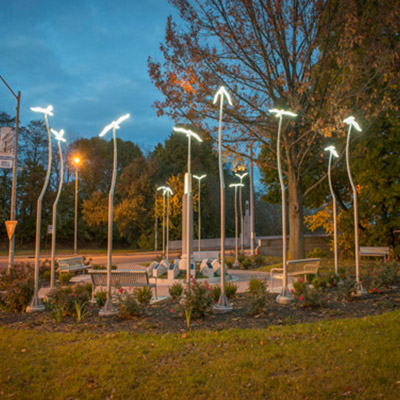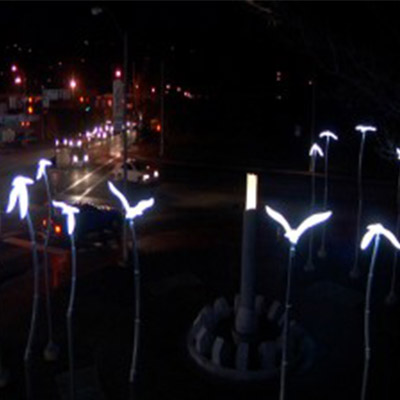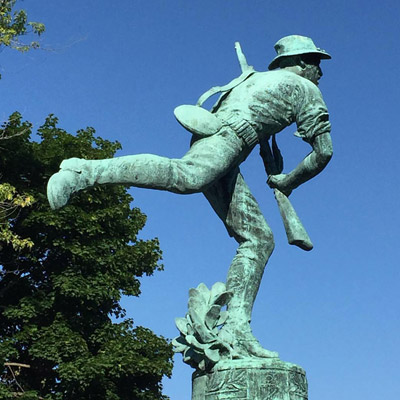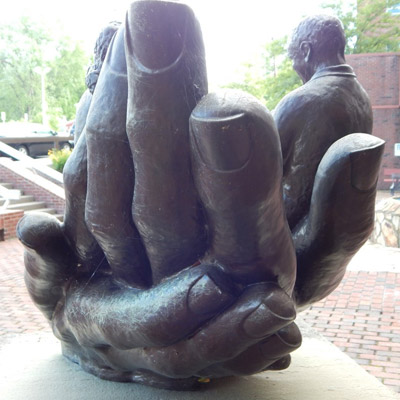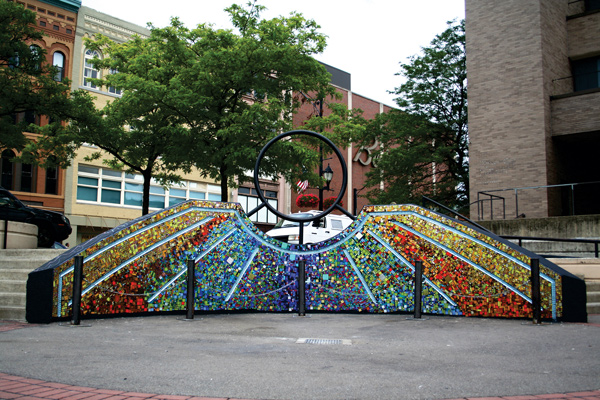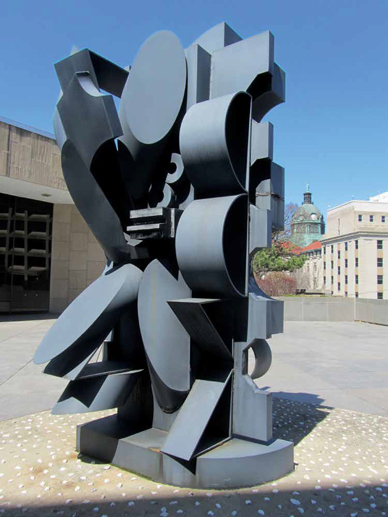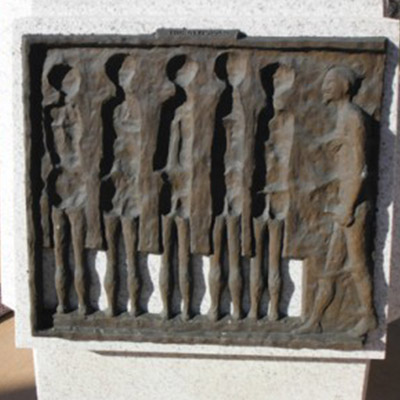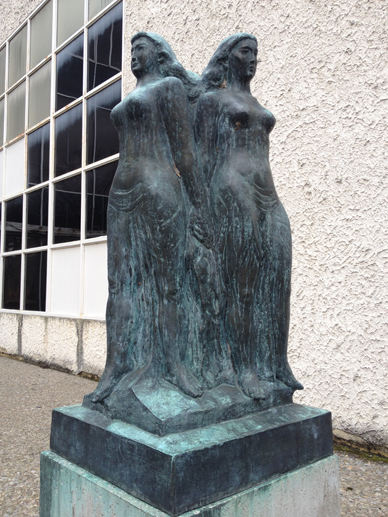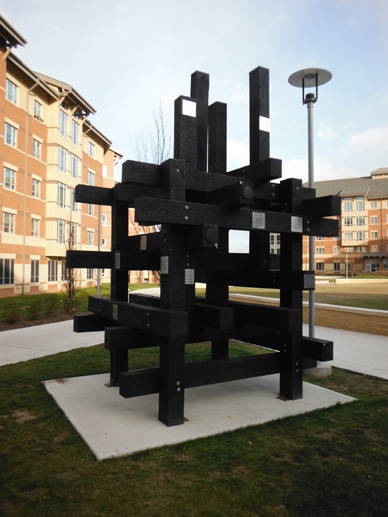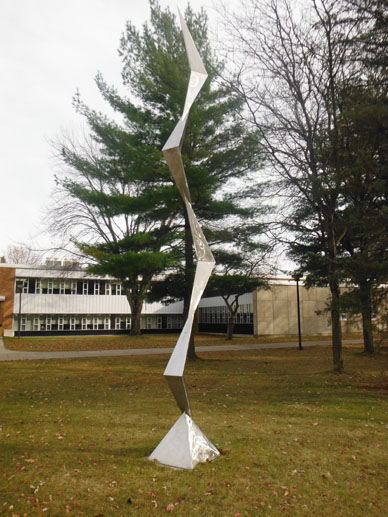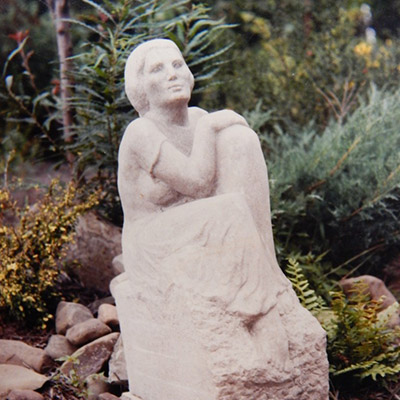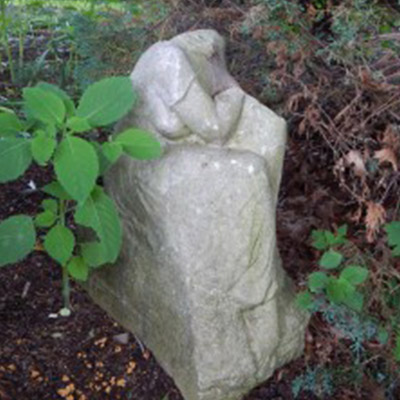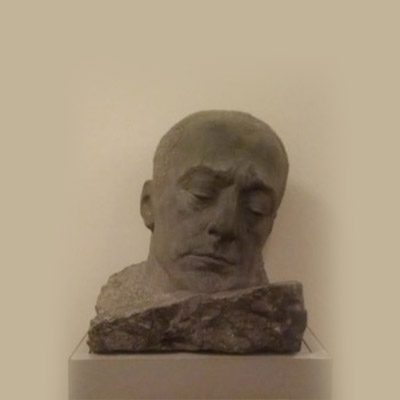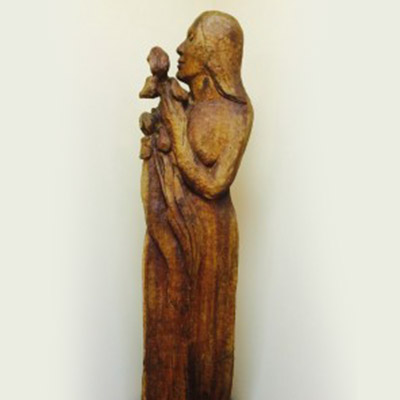Reviewed by David L. Schriber a.k.a CyberBassDave
About 100 persons gathered Sunday, Feb. 21, at First Presbyterian Union Church in Owego to hear the steel drum band Panigma. It was a head-nodding, toe-tapping 90 minutes of Caribbean sounds that even gave audience members a chance at the percussion instruments. The 16 selections included “Yellowbird” (the most-requested steel drum song) and other Latin tunes, plus familiar songs byStevie Wonder, Bobby McFerrin and even Elvis!
Formed in 2000 by Ithaca College graduates Gina Alduino and Thomas Kline, Panigma puts a Caribbean flavor on traditional and popular songs, both Latin and non-Latin. Kline, now Director of Music Admissions at Ithaca College, played a traditional drum set. His wife, now Gina Kline, a music educator at George F. Johnson Elementary School in the Unioni-Endicott school district, played “double seconds,” which is a double steel drum set that usually provides “alto”-type harmony to the lead drum, or “pan,” as steel drums are called. Playing lead pan was Joel Smales, Director of Bands for the Rod Serling School of Fine Arts at Binghamton High School. Rounding out the bass sound was electric bass guitarist Tom Westcott, an Owego-Apalachin school counselor and member of the Badweather Blues Band.
The first half of Panigma’s program was a mix of Caribbean tunes (such as “Che Che Chole”) and songs arranged for steel drums (such as “Don’t Worry, Be Happy”). Gina Alduino Kline played melody on her double seconds for her own arrangement of a ballad made popular by Presley, “Can’t Help Falling in Love With You.” Surprisingly, non-Latin songs don’t sound that strange on steel drums. If you’re unfamiliar with a steel drum, the high notes sound a little like a celeste, a little like a marimba. Some of the low notes on the “alto” drum have almost a trumpet timbre.
Panigma got the audience involved in the second half of the show as Smales distributed a variety of cow bells, shakers, blocks and rhythm sticks and encouraged folks to pass them around so that anyone who wanted to could join in the fun. Nine-year-old Elaina Smales joined the group up front to play “Compadre Pedro Juan” upon a pizza-sized pan (not to be confused with a pan-sized pizza). She played confidently, occasionally throwing a sidelong glance to her father as if to say, “Are you still with me, Dad?” Doubtless she’ll be a huge talent by the time she’s in high school!
As the group played “Chiquita,” Smales and G. Kline turned their drums around and Smales took his down the aisle to let folks see how the drums look from the performer’s perspective. Panigma’s final piece, Wonder’s “I Wish,” showcased the electric bass and traditional drums that had so well blended with the steel pans. Panigma definitely engaged their audience and did a fine job of dispelling any enigma about steel drums.
Panigma appeared as part of the Tioga County Council on the Arts’ “Always on Sunday” series; programs always are on the third Sunday of the month.
ABOUT STEEL DRUMS
The steel drum concept came out of post-World War II Trinidad, where during a period of civil unrest, traditional drumming was outlawed. Not to be denied, resourceful people found junkyard parts (auto hubcaps, brake drums, etc.) to beat on. As old pans and lids became distorted by the pounding, people discovered the surfaces had different pitches in different places, depending on how they had been bent.
Steel drums are called “pans,” and the bass versions sometimes “oil drums,” because these latter are actually 55-gallon drums with a musically tuned head. (The Panigma members explained that they didn’t bring their bass drums to Owego, because they don’t fit too well in the van.) Tuning is done with a hammer by a technician with the touch of an auto body dent remover and the ear of a musician. I observed it is indeed possible to play more than one note at a time on a single steel drum. In fact, Smales told me afterwards, expert drummers can hold two mallets in each hand and thus play a four-note chord on a double drum. The layout of notes in a pan isn’t intuitive, as with a piano keyboard, so most players label the pitches.


